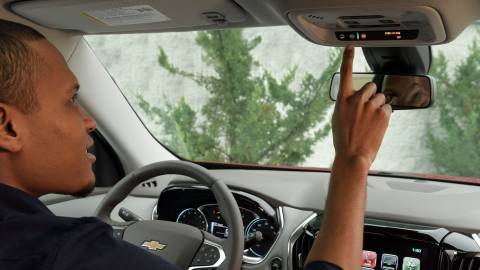OnStar has been a staple of GM vehicles since 1995. What started as a simple navigation system turned into a theft protection, emergency services, and human assistance suite. And now, that last part is cutting out the humans in some cases in favor of Google's AI.

GM’s OnStar Interactive Virtual Assistant (IVA) first launched in 2022, powered by Google Cloud AI tech, and the automaker this week shared more details about the partnership as part of the Google Cloud Next conference, The Verge reports.
One of OnStar's hallmark features is the ability to call a human for assistance, whether that's getting navigation help, questions about the vehicle, or help with an emergency. But the more people who use that feature, the longer they'll have to wait for a human to help, and that's where Google's Cloud services come in.
GM uses Google AI to deploy chatbots that can conversationally help answer customer questions about GM vehicles and product features based on the technical information from GM’s extensive vehicle data repositories, according to a Tuesday press release.
The two companies' work has now opened the door to future generative AI deployments being jointly piloted by GM and Google Cloud, GM says.
This isn't the first time GM delved into combining AI with OnStar. In 2015, the company put IBM Watson into its vehicles, and later in 2021, Alexa joined the club. But IBM Watson focused on giving OnStar more capabilities, and Alexa brought OnStar out of the car and into the home. With Google, GM is focused on making OnStar a more capable virtual assistant.
Google Cloud’s conversational AI technology, known as Dialogflow, already handles more than a million customer inquiries a month, freeing humans to take on more complex issues. And thanks to that reliance on the cloud, you don't need a new vehicle to benefit from the Virtual Assistant either. The technology is available in the US and Canada in cars from 2015 and later.
